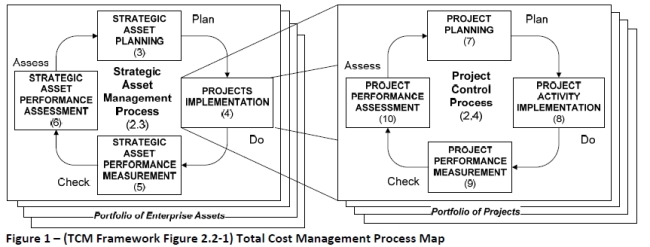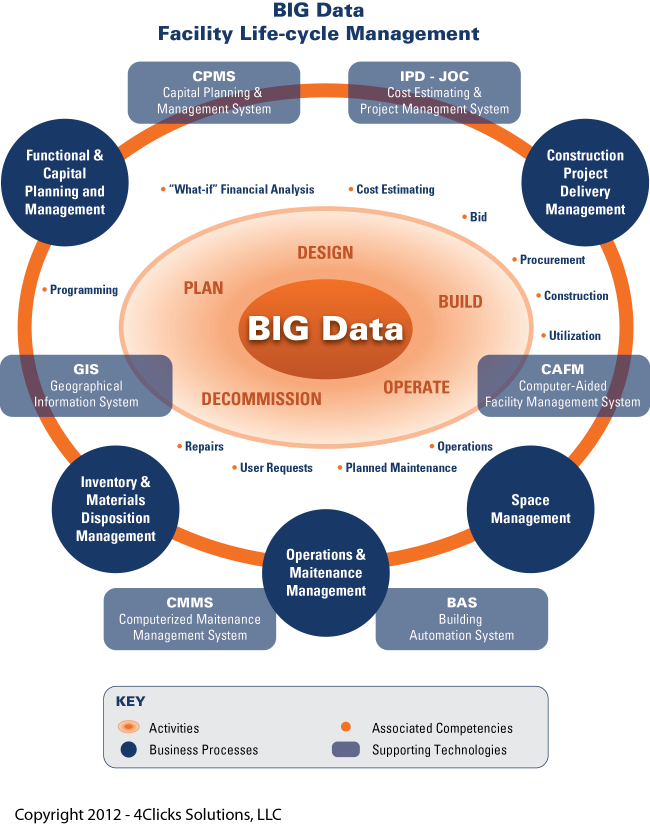BIM, EVM, TCO (or TCM – Total Cost Management) are all inter-related
BIM is the life-cycle management of the built environment supported by digital technologies.
TCM is effective application of professional and technical expertise to planand control resources, costs, profitability and risks. Simply stated, it is a systematic approach to managing cost throughout the life-cycle of any enterprise, program, facility, project, product, or service. This is accomplished through the application of cost engineering and cost management principles (I assert this aspect is somewhat incorrect…it not only cost engineering and cost managemt principles, but rather the application and integration multi-discipline competencies;…but hey this definition is from the AAECI, so how can I complain?). , proven methodologies and the latest technology in support of the management process. It can also be considered the sum of the practices and processes that an enterprise uses to manage the total life-cycle cost investment in its portfolio of strategic assets. (Source: (PUBLIC REVIEW DRAFT) AACE® International Recommended Practice No. 82R-13 EARNED VALUE MANAGEMENT (EVM) OVERVIEW AND RECOMMENDED PRACTICES CONSISTENT WITH ANSI EIA-748)
EVM has two critical flaws…
1. No mention of the need for collaborative project delivery methods, examples in construction sector being IPD – Integrate Project Delivery and JOC – Job Order Contracting. I argue that EVM is little more than an accounting number crunching exercise unless embedded within a collaborative project delivery methods. (History BTW proves me write on this… just as in the case of ISO 9000, consultant made millions while little true improvement in fundamental business processes was gained).
2. No mention of functional as well as physical metrics. Both are required in terms of a product, building, etc.
So, what is needed?
A complete ontology for each sector (built infrastructure, products, etc.). A life-cycle management strategy noting all required competencies, process, technologies, stakeholder, etc. etc.
For example…
And a rich listing of metrics.




